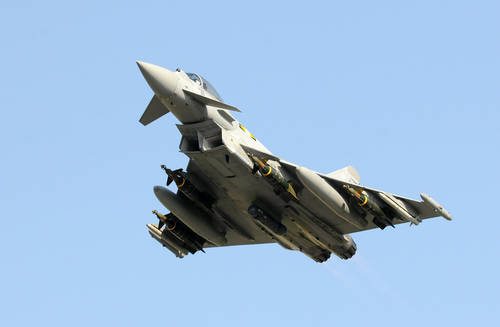NATO operations in Libya entered a 100th day on Monday with airstrikes having eased the siege of key rebel cities but with Moamer Kadhafi still in power and fears of an open war lingering.
Three months after French jets flew their first missions over eastern Libya, NATO is still pounding targets across the country in what has become a war fought on multiple fronts, but with few clear victories for either side.
As “Operation Unified Protector” approaches its 5000 strike sortie, NATO is still hitting around 50 targets a day, mostly in or around Tripoli and Misrata in the west; Brega in the east; and the Nafusa Mountains to the south of the capital.
But the alliance’s early success in pushing Kadhafi’s forces outside striking distance of Benghazi and Misrata have not decisively tipped the balance in favour of the rebels.
An uneasy stalemate has taken hold, with rebel fighters told to hold their positions around Misrata and Ajdabiya, near Brega, despite the occasional rocket or mortar attack causing casualties.
“It was all quiet today,” said Musa Maghrebi, a rebel based at Ajdabiya, late on Sunday. “The forces are staying in position.”
Only in the Nafusa Mountains does the rebel army of ill-equipped irregulars and defectors appear to be making any sustained progress toward Tripoli.
Despite NATO’s limited success in neutralising Kadhafi’s forces, most Libyans in the east remain strongly in favour of the alliance’s mission.
Forty-six-year-old Musa Mbarak Al-Okaili, whose brother Mohammed died 100 days ago after his MiG-23 jet was shot down by Kadhafi forces while he defended Benghazi, said NATO had helped prevent a massacre.
“They are helping us out,” he said, sitting by a shrine to his brother at the family home just outside the rebel capital.
“If it was not for NATO and for people like my brother, Kadhafi’s army would have entered Benghazi.”
Among the city’s residents there are few doubts about the scale of the bloodshed that would have ensued had Kadhafi taken the city.
It is a threat that NATO is keen to recall as it faces unease among members about the length of the war, with some countries including Italy floating the idea of a ceasefire.
“Three months ago, Benghazi was under threat and Misrata under siege — so look where we are now, by comparison,” said Oana Lungescu, a NATO spokeswoman.
“Kadhafi’s forces are no longer in a position to mass forces, but they are still a threat.”
Near the heavily bombarded city of Misrata, there was renewed evidence of that threat on Sunday when one person was killed and seven were injured by two shells, according to an AFP journalist in the city.
Meanwhile multiple rocket and heavy machine gunfire was heard on the plains below the rebel enclave in the Nafusa Mountains.
Rebel commanders said the fighting centered on Bir al-Ghanam, a strategic point on the road to the Libyan capital.
Amid the broader slowdown in fighting, an African Union panel said that Kadhafi would not participate in peace talks, in what appeared to be a concession.
Rumours have been rife in recent days that the Libyan leader may consider leaving Tripoli and that rebels could accept his internal exile to a remote location.
French Foreign Minister Alain Juppe said Sunday there had been contact between the two camps that specifically involved the fate of Kadhafi.
“I know that they covered, for example, the fate reserved for Kadhafi himself, which is one of the central questions today…,” he told France’s RTL radio.
But with judges at the International Criminal Court expected to decide Monday whether to issue an arrest warrant for Libyan leader Moamer Kadhafi for crimes against humanity, the scope for a deal could yet narrow further.










